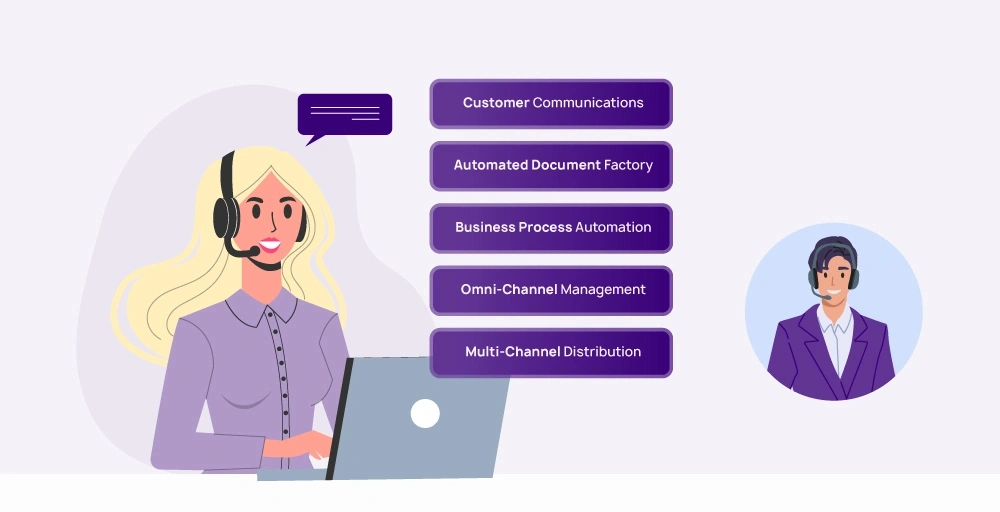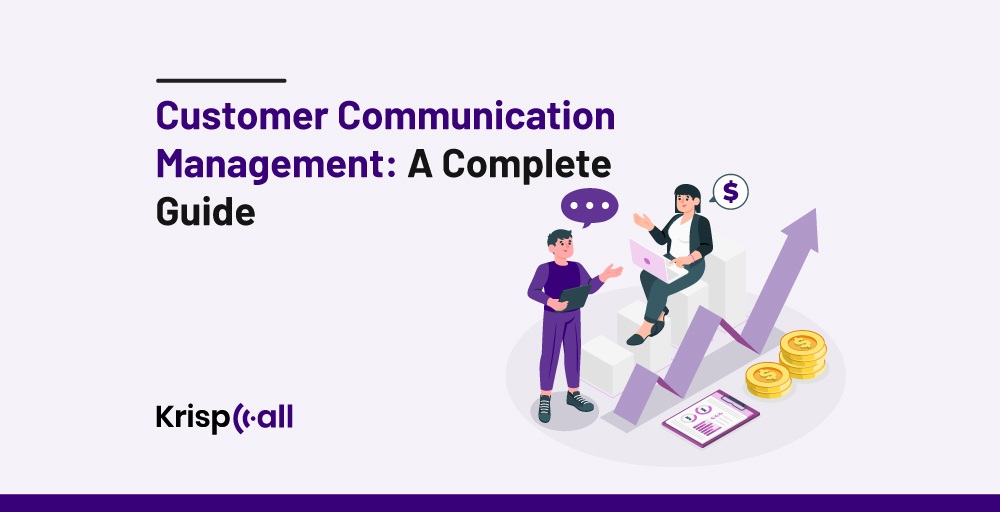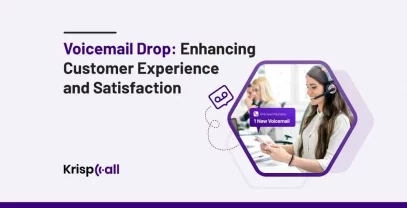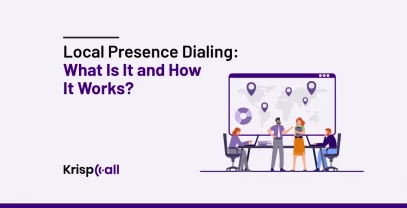Inconsistent and impersonal customer communication can frustrate customers and degrade the growth of your brand.
These communication issues can lead to losing of customers 👥 and negative impacts on your business’s reputation and revenue.
Customer Communications Management 📞 ensures every message is consistent, personalized, and timely. CCM automates processes, integrates channels, and uses data to improve communication.
With CCM, you’ll boost customer satisfaction, streamline operations, and enhance brand loyalty, driving overall business success.
What Is Customer Communication Management (CCM)?
Customer communication management (CCM) is the method of applying tools and procedures to improve and control their communications and relationships by companies with clients. It combines many forms of communication, such as print, email, SMS, social media, and online interactions, to provide a standardized and customized client experience over all touchpoints. You can practice key strategies to build up your communication and create impression through your words.
With the help of customer communications, customer interactions can be better created, delivered, stored, and accessed across a range of media management solutions. It offers centralized management of customer communications.
Omni-channel marketing provides a better customer experience across multiple channels by connecting them within a single system. The mediums to connect and interact with clients are Social media, SMS, website, email, phone calls, and live chat. In a large organization, effective and proactive communication with customers can make positive changes in the customer experience.
What are the Benefits of Effective Customer Communications Management?
Effective customer communications management can positively influence on the businesses. It contributes to the various parts of the field along with customer satisfaction. Some notable benefits of customer communication management are listed below:
1. Enrich the overall customer experience
Clear, open communication and effective problem-solving clarify confusion and build trust 😃🛒. Routine interactions should be automated to guarantee that essential data is never answered. Additionally, constantly seeking out client feedback shows a dedication to ongoing improvement, promoting customer happiness and loyalty.
2. Boost productivity
Customer communication management increases productivity 🚀📈 by centralizing information, automating regular conversations, and facilitating effective multi-channel delivery. Scheduled messaging and automated procedures reduce the need for manual involvement, freeing up employees to work on strategic projects.
3. Low risk
A secure communication channel lowers the risk of attacks by protecting sensitive consumer data. Furthermore, Customer Communication Management makes it possible for timely and customized updates that raise client retention and satisfaction. It also ensures data correctness, facilitates scalability, and enables enterprises to effectively handle increasing communication needs.
4. Aids in the digital transformation of businesses
Through the utilization of consumer data and the integration of many communication channels into a single platform, it empowers 💻🔄 companies to send customized messages that align with the interests and actions of each individual.
CCM’s omni-channel, fast, and consistent communication improves customer happiness and loyalty by improving the entire customer experience. Businesses’ digital presence and competitiveness are further strengthened by embracing new digital channels and streamlining the customer journey.
5. Promotes brand equity
Customer Communication Management is essential for establishing brand equity. It makes sure that each interaction reflects the brand’s identity and values by using consistent brand messaging across a variety of platforms, which promotes brand awareness and loyalty. Businesses show their dedication to customer service by listening to comments and quickly resolving issues, which strengthens brand equity.
In the end, successful CCM builds enduring customer relationships and boosts brand equity, which propels long-term company growth.
6. Higher Conversion Rates
Businesses should enhance their communication tactics iteratively to better suit the needs and preferences of their customers, which will ultimately lead to higher conversion rates. This can be achieved by gathering feedback, automating follow-ups, and optimizing the customer journey.
According to studies, companies who use CRM tactics can turn up to 40% more leads into sales than their non-using competitors. Additionally, there is a 25% chance that these tactics may improve client retention rates.
7. Competitive advantage
Customer Communication Management (CCM) provides competitive advantage by:
- Define Clear Objectives for Measuring CSAT
- Design Effective CSAT Surveys
- Choose the Right Time to Send Surveys
- Analyze and Segment CSAT Data
- Act on Feedback Promptly
- Communicate Improvements and Actions
- Integrate CSAT with Other Metrics
- Regularly Review and Update Your CSAT Strategy
- Train Your Team
Types of customer communication management
Customer Communication Management is a critical aspect of managing interactions with customers across various channels. Here are different types of businesses mostly used.

1. Customer Communications
This includes engaging in direct conversations with clients via phone calls, emails, SMS, social media, in-person meetings, and other channels. Clear and consistent communications that are in line with the requirements and expectations of the consumer are the features of effective customer communication. Two essential elements are responsiveness and personalization.
2. Automated Document Factory
The ADF refers to the process of creating, managing, and distributing documents. It combines many tools and processes to generate papers including contracts, statements, invoices, and marketing collateral precisely and quickly. ADF facilitates the speedy processing of document-related workflows that ensure legal compliance and minimize manual errors.
3. Business Process Automation
BPA is the use of technology to automate workflows and repetitive business operations. Within the framework of CCM, BPA can handle repetitive duties like order processing, billing, and customer follow-ups, as well as automate responses to frequently asked questions. This increases productivity and frees up staff for more difficult jobs.
4. Omni-Channel Management
Omni-channel management ensures a smooth and integrated consumer experience across all communication channels. The customer experience should be uniform and smooth despite the channel they use to communicate with a business—phone, social media, email, or in-person. Businesses can offer integrated marketing, sales, and customer service by implementing omni-channel strategies.
5. Multi-channel distribution
Multi-channel distribution is the process of delivering customer service over a variety of channels, including print, email, SMS, web portals, and mobile apps. Customers can obtain information and services via the channels of their choice. By accommodating a wide range of consumer preferences, multi-channel marketing expands customer reach and ease.
Tips to build an effective customer communication strategy
It’s important to implement better and effective customer communication strategies and some tips for effective customer strategies are listed below:
1. Invest money into multichannel communication
- Diversify investment: Invest across multiple communication channels like chat, social media, email, phone, and SMS, to connect with clients on their preferred platforms. It ensures that you can engage with a wider audience.
- Uniformity Throughout Channels: Make sure the brand voice and messaging of the company are the same in all media. This keeps customers from being confused and helps to create a consistent brand image.
2. Assist (meet) clients with their ease
Customize interactions to the interests and actions of your customers. Utilize data analytics to determine where your clients spend their time so that you can adjust your messaging. Deliver prompt and attentive assistance through all available channels. Make sure that your team is prepared to handle support inquiries on social media if a client decides to use those channels for their inquiries.
3. Gather feedback regularly
Gathering necessary information regarding the client’s interests and concerns is necessary as it helps in resolving and finding problems and solutions. Some methods of gathering feedback are:
- Surveys and Questionnaires: Conduct surveys and questionnaires regularly to get feedback about your goods, services, and general clients. Net Promoter Score (NPS) is one tool that can offer useful insights.
- Observe social media: Analyze social media platforms for comments from customers. Address problems and get immediate feedback by interacting with comments and direct messages.
- Customer Reviews and Testimonials: Customers should be encouraged to post evaluations and testimonials. In addition to offering feedback, this strengthens the social evidence of your brand.
4. Improve interaction inside the company
Invest in powerful solutions for internal communication, such as project management software🗂️💻, Microsoft Teams, or Slack to improve teamwork and information exchange.
Give your employees regular training on the newest techniques and resources for communicating. Make sure they know the value of and how to use excellent customer communication.
Establish an internal feedback loop so that staff members may offer ideas and observations derived from their dealings with clients. This aids in the ongoing enhancement of your communication plan.
5. Measure the right metrics
Choose those key performance indicators related to the client experience that are most important for you and measure them regularly. Among the crucial metrics for customer communication are:
- First response time(FRT): FRT calculates how long it takes to answer a customer’s first question. Quick responses enhance client satisfaction by meeting their expectations. Acknowledgments made quickly promote confidence. Quicker reaction times might set your brand apart from rivals.
- Average resolution time (ART): An important indicator that measures the average amount of time needed to address customer concerns from the point of contact to the point of resolution is called Average Resolution Time (ART). This measure is essential for some reasons. First off, clients are happier and more satisfied generally when issues are resolved more quickly. Finally, by enabling better job distribution and guaranteeing that difficult issues receive the proper attention without postponing simpler solutions, an understanding of ART contributes to efficient resource management. High levels of customer satisfaction and service efficiency are sustained by this balance.
5. Focus On Customer satisfaction (CSAT)
Measuring the appropriate metrics to assess performance and satisfaction is one of the many essential elements that go into developing a successful customer communication strategy. Customer satisfaction is one of the most important (CSAT) metrics. The following advice will help you successfully integrate CSAT into your customer communication plan:
- Define Clear Objectives for Measuring CSAT
- Design Effective CSAT Surveys
- Choose the Right Time to Send Surveys
- Analyze and Segment CSAT Data
- Act on Feedback Promptly
- Communicate Improvements and Actions
- Integrate CSAT with Other Metrics
- Regularly Review and Update Your CSAT Strategy
- Train Your Team
Conclusion
Customer communication management is an essential part of every profitable business plan. Businesses can improve customer experiences, increase efficiency, and lower risks by integrating several communication channels and customizing interactions.
Through effective CCM, businesses can gain a competitive edge in the market through digital transformation and brand equity. Businesses can build strong, enduring relationships with consumers by investing in a reliable CCM system and optimizing communication strategies based on customer feedback. This will ultimately spur growth and success in businesses.
A well-managed customer communication process enhances productivity and ensures uniformity. It makes training easier and improves the client experience. It maintains regulatory compliance and facilitates simple change adaptability.
FAQs
What is a customer communications management platform?
A Customer Communications Management (CCM) platform is a comprehensive software solution designed to simplify and optimize the ways businesses communicate with their customers.
What are customer communications management companies?
Customer Communications Management (CCM) companies are organizations that provide services and solutions to help businesses manage their customer interactions effectively across various channels.





